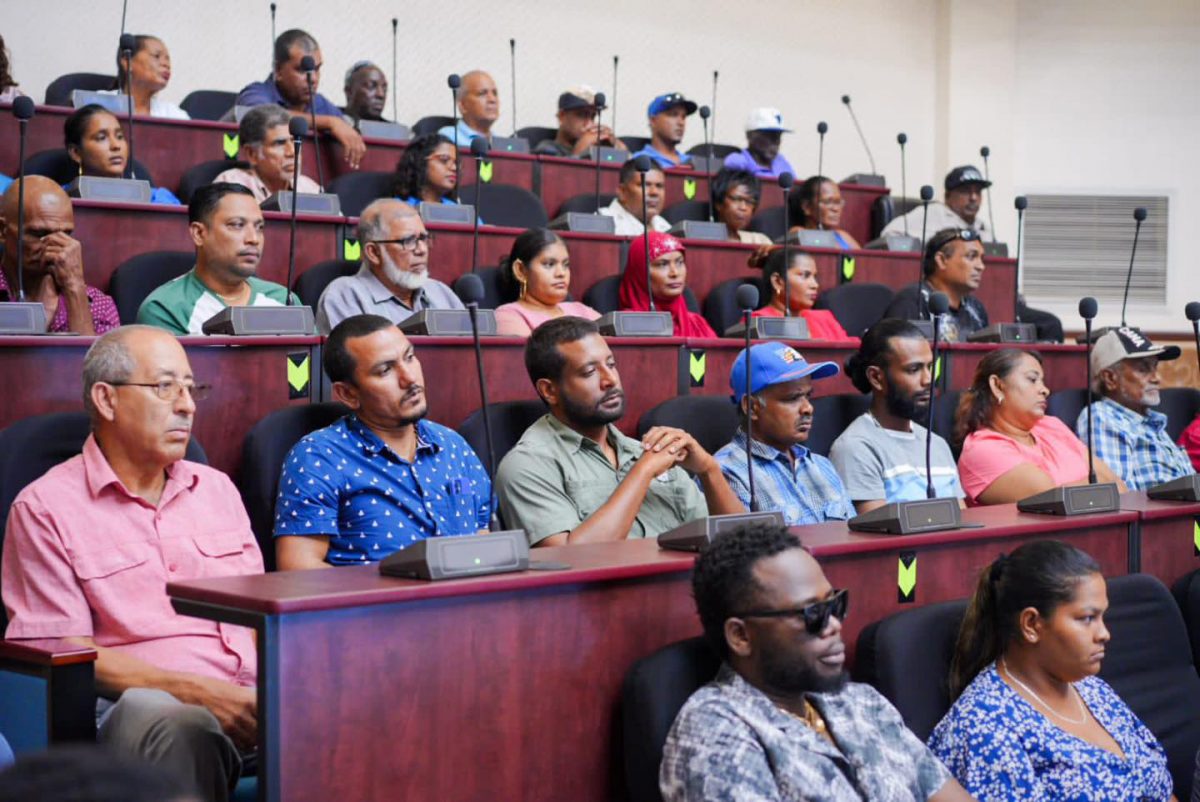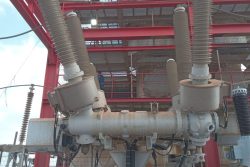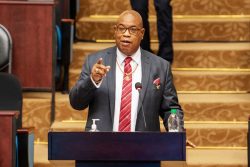At the Guyana Livestock Development Association (GLDA) poultry symposium on Friday, President Irfaan Ali said that the government is willing to handle proposed co-investments in the areas of a sausage plant, a chicken nugget facility, and a protein plant for aquaculture.
He also noted that they are committed to examining the opening up of 25,000 acres of land and having farmers grow rice as an input to feed production for the poultry industry.
In his address he examined the forward and backward linkages in the food production chain of which agriculture is the producer of raw material.

One of the issues faced by the poultry industry that was highlighted at the symposium is that of a lack of adequate storage facilities. On this note, the President declared that the government plans to co-invest and support the cold storage facilities in the different regions, “so that when we ramp up production and we have periods of over-production we go into the cold storage”.
Ali also noted that Suriname is committing 75,000 acres of land to CARICOM for the production of grains and as such Guyana, being the closest to Suriname needs to align itself to gain from such a storage capacity.
“If we can form ourselves in a consortium, we’re the closest to Suriname… the area they have identified is very close to Guyana. Let’s form ourselves into a consortium and go after the 75,000 acres of land also for the production of grains. But in this case, we’ll be producing that grain for the Regional market. Which means that the port becomes important from a storage perspective. We will have to increase our storage capacity tenfold,” he explained to the farmers present at the symposium.
“We can’t expand the production and then don’t have the facility to store that production. In the whole CARICOM, taking the total demand of CARICOM for corn, soya and rice, we only have 20% of the storage capacity… [So] forward planning requires storage…,” he noted and pointed out that whilst other countries had six months forward planning in their system when the Ukraine war hit, Guyana had none.
Ali also addressed the issue of the increase in the cost of feed production, noting that from 2020 to now, the cost of rice as an input to feed has increased by 100%, the cost of soya by 65%, and the cost for corn by 55%. The contributing factors to this increase, he explained, include the war in Ukraine and the cost of shipping and logistics.
“We cannot build a sustainable, resilient, and viable industry if we don’t control this cost to begin with. We can eliminate the transport and logistics cost by building up our own capacity and increasing our own yield and production in these three areas,” Ali said.
Another issue plaguing the agricultural sector and by extension the poultry industry is that of financial assistance from abroad. According to Ali, “because of the changes in the global financial system the credit facility has been removed i.e. the US companies were giving the buyers of corn and soya three months credit, but they’ve removed that credit and you have to pay cash up front and then wait for the supply”.
Also present at the symposium were GLDA Director Dwight Waldron, David Fernandes (representative of the Poultry Producers of Guyana), and Agriculture Minister Zulfikar Ali Mustapha. They each gave a brief summary of the importance of the poultry industry to Guyana, its contributions to the Region, and some of the issues it has faced over the years.
The industry, Fernandes stated, is the largest to provide employment (in the area of farming) in the country. He noted that one of the major issues faced by the poultry sector is that of illegal importation of chicken from Brazil. He explained that permission was granted by the government during the Christmas season for poultry to be legally imported but once the season passed the activities continued on an illegal basis. This led to local poultry producers having to sell their product at reduced in order to avoid facing heavier losses due to the lack of adequate cold storage.
Waldron in turn also highlighted the issue of Climate Change leading to a seemingly continuous rainy season. This, he noted, has affected the poultry as well as the flora in Guyana.
Last week, the government committed to pay $29m for the vaccines that are needed for the poultry. This investment, Ali explained, will help to eliminate the $6 increase per chick to be passed on to the farmers. Negotiations have also been had between the government and Demerara Bank Limited to facilitate a 3.5% interest rate for loans $500,000 and less for small famers and 4% interest for loans between $500,000 and $1M. Farmers had previously lamented their need for low-cost financing to get back into production. For those loans between $1M to $5M, provision has been made for 5.5% interest to be granted.
Also in attendance at the symposium were representatives of the Inter-American Institute for Cooperation on Agriculture (IICA) and the Food and Agriculture Organization of the United Nations (FAO) who were urged by the President to get on board the project implementation team in helping to build a stronger poultry sector.
The aim of the ceremony was to discuss plans to grow the sector in hopes of making Guyana, once again, the bread basket of the Caribbean. On this note, Ali explained that the government’s support to the industry will help to position the poultry sector to be one of the strongest of its kind in the region; “to develop an integrated and holistic system to deal comprehensively with all of these challenges in building and strong poultry industry”.
The function was held at the National Conference Centre at Lillendaal and was attended by hundreds of poultry farmers.







